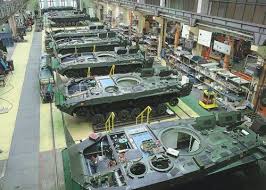Government releases Draft policy on Defence Production
The Ministry of Defence has released draft policy on defence production that aims to make India one of the top five manufacturers of defence platforms with active participation of public and private sectors. The ministry has sought comments and suggestions of experts and stakeholders on policy. At present, India is one of the world’s largest importer of military platforms and weapons.
Objectives of Policy
- Make India self-reliant in defence production as well as fulfil demand of friendly countries. Achieve turnover of Rs.1,70,000 crore in military goods and services by 2025 by promoting domestic defence industry.
- Make India one of top five manufacturers of defence platforms with active participation of public and private sectors.
- Achieve export of Rs. 35,000 crore in military equipment and services by 2025 by promoting the domestic defence industry.
- Attract additional investment of nearly Rs 70,000 crore and create employment for nearly 2 to 3 million people in the country.
Features
Identified military platforms: The policy identifies 12 military platforms and weapons systems for production in India to achieve aim of self-reliance. They are fighter aircraft, warships, land combat vehicles, missile systems, medium lift and utility helicopters, gun systems, small arms, ammunition and explosives, electronic warfare (EW) systems, surveillance systems and night fighting enablers, among others.
Licensing process for defence industries: It will be liberalised and list of items requiring licences will be reviewed and pruned. Except small negative list, other items will be taken out of purview of licensing. All applications for licences for defence industires will be disposed off in 30 days. No-objection certificates (NOCs) and comments from all agencies must necessarily be received within two weeks of filing of applications by the companies.
Tax regime for defence industries: It will be also rationalised to make domestic manufacturing attractive by ensuring that there is no tax inversion. Rationalise taxes on import of capital goods and services, inputs and components used in defence production.
Month: Current Affairs - March, 2018


